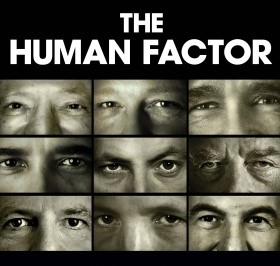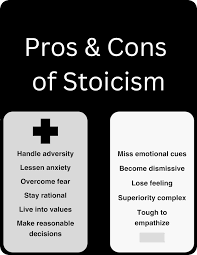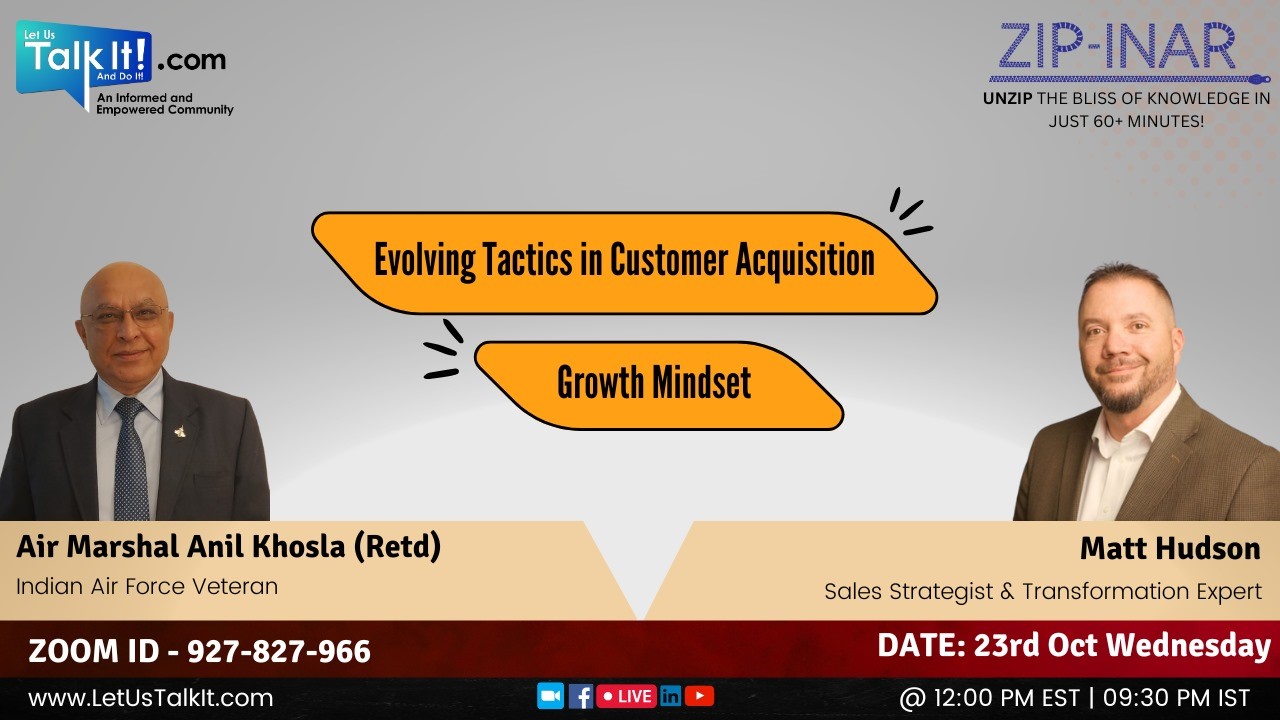My Article was published on the “Life of Soldier” Website on 10 Mar 25 & the Journal on Apr 25
As warfare continues to evolve with technological advancements, the enduring importance of human factors in influencing military effectiveness becomes increasingly critical. Even as modern warfare incorporates sophisticated technologies, including artificial intelligence, unmanned systems, and advanced weaponry, the human element remains central to military success. The interphase of human factors and technology in modern warfare underscores the ongoing need for research and understanding in training, decision-making, psychological resilience, and ethical considerations.
Role of Human Factors in Military Effectiveness
Morale. Morale is a key human factor and remains vital to military effectiveness, even in an era of advanced technology and automated systems. In technologically advanced warfare, morale influences the traditional battlefield dynamics and the performance of personnel operating and managing cutting-edge systems like drones, artificial intelligence platforms, and cyber tools. However, its impact goes beyond individual performance. In modern warfare, which often involves collaborative efforts across multinational coalitions and diverse teams of specialists, morale plays a crucial role in uniting individuals with varied backgrounds and expertise, fostering cohesion and teamwork. This unity is especially critical in technologically advanced operations, where coordination and mutual support among specialists are essential for success.
Physical Fitness and Health. Physical fitness and health remain critical to military effectiveness, even in technologically advanced warfare. While the physical demands of traditional combat persist in specific contexts, the evolution of warfare introduces new health considerations tailored to advanced operational environments. Even in technologically advanced militaries, specific roles still demand high levels of physical fitness. Special operations forces, rapid deployment units, and urban warfare teams require soldiers to operate in challenging environments. Physical readiness ensures these soldiers can perform at their peak in hybrid warfare scenarios where traditional combat merges with advanced technologies. On the other hand, operators of advanced systems, such as drone pilots and cyber specialists, often engage in sedentary roles that demand prolonged focus and cognitive endurance. While traditional physical exertion may not apply to these roles, maintaining overall physical fitness is vital for mental clarity, stress resilience, and long-term health. Regular exercise helps counteract the adverse effects of prolonged sedentary activity, such as fatigue and musculoskeletal issues. Physical fitness and health directly impact cognitive abilities and psychological well-being. Studies have shown that regular physical activity enhances decision-making, memory, and stress management, which is essential for personnel managing high-pressure tasks in technologically advanced warfare. Advanced warfare introduces potential health risks related to prolonged exposure to electromagnetic fields, high-tech radiation, or the psychological strain of operating advanced systems. Physically fit individuals are better equipped to handle these stressors, while health monitoring programs can promptly identify and address emerging issues. In technologically advanced warfare, physical fitness and health remain indispensable, adapting to the unique demands of modern operational environments.
Psychological Resilience and Mental Health. The psychological impact of warfare on soldiers cannot be underestimated, particularly in the context of advanced technology that can amplify stress and trauma. Exposure to high-stakes environments, even when mediated by technology, can lead to mental health issues such as post-traumatic stress disorder (PTSD). Research from the U.S. Department of Veterans Affairs indicates that “military personnel exposed to high-stress combat situations, even indirectly through technology, are at risk for developing PTSD”. This underscores the urgent need for robust mental health support systems that can address the unique challenges posed by technologically advanced warfare. One of the approaches to enhancing psychological resilience is through resilience training programs. These programs focus on developing coping strategies and mental fortitude, enabling personnel to handle the stresses of combat better. Recognising the human aspect in unmanned systems operations is also essential. Addressing these issues through mental health support and ethical training is vital for maintaining operational effectiveness.
“The challenge of modern warfare is not merely acquiring information, but making sense of it promptly”.
– Colonel John B. Alexander
Decision-Making. In technologically advanced warfare, the speed of information flow and the complexity of decisions demand that military personnel be equipped to make critical choices under extreme stress. Human cognitive capabilities can enhance and hinder decision-making, particularly in high-pressure situations. The “information overload” phenomenon can complicate decision-making for commanders who must sift through vast data to determine actionable intelligence. During the Gulf War, U.S. forces faced overwhelming intelligence from various sources. Effective decision-making was pivotal; leaders who could filter critical information and act decisively contributed significantly to operational success. Training programs that emphasise critical thinking and decision-making under stress are essential for preparing military personnel for these challenges.
“We must prepare our leaders to confront the ethical challenges posed by technology in warfare”.
– Major General Linda Singh
Ethical Considerations and Moral Decision-Making. Integrating technology into warfare raises profound ethical questions that are increasingly relevant in modern military operations. As decision-making processes become more automated, the moral responsibilities of military personnel must be carefully considered. The use of drones in targeted killings, for example, has sparked debate over the ethics of remote warfare. Critics argue that distance can desensitise operators to the consequences of their actions, leading to a disconnect from the human impact of their decisions. A report by the International Committee of the Red Cross (ICRC) highlights the importance of maintaining accountability in unmanned systems: “The ethical implications of using drones in warfare must be addressed to ensure compliance with international humanitarian law”. Moreover, it underscores the necessity of ethical training for military personnel to navigate the complexities of modern warfare and make sound, moral decisions.
Cultural and Social Dynamics. Cultural and social dynamics have long influenced warfare’s outcomes, shaping strategies, alliances, and interactions between military forces and civilian populations. In technologically advanced warfare, where information, cyber operations, and automated systems play prominent roles, the importance of cultural and social factors has only grown. Misjudging or ignoring local customs, beliefs, and power structures can lead to civilian population alienation, resistance, and operational failures. Information warfare—a key component of technologically advanced conflict—relies heavily on cultural and social dynamics. Propaganda, misinformation, and psychological operations must be tailored to resonate with the target audience’s values and beliefs. A deep understanding of cultural symbols, societal norms, and communication patterns enables militaries to effectively craft persuasive narratives and counter enemy disinformation. In technologically advanced warfare, adversaries often target societal cohesion through hybrid threats, including misinformation, cyber-attacks on critical infrastructure, and economic disruption. Building social resilience requires fostering a shared sense of identity, trust in institutions, and cultural pride among civilian populations. Cultural and social dynamics remain integral to the success of military operations, even in the context of technologically advanced warfare.
Adaptability and Innovation. Adaptability is crucial in high-stakes environments. A study by the RAND Corporation emphasises that “the ability to learn and adapt in real-time is often the difference between success and failure in modern combat”. Adaptability and innovation are indispensable qualities in the context of technologically advanced warfare. As technological development accelerates and the nature of conflict evolves, military forces must remain flexible and creative to address emerging challenges. These qualities are critical in ensuring operational effectiveness, outmanoeuvring adversaries, and maintaining a competitive edge. Technological advancements in artificial intelligence (AI), robotics, quantum computing, and cyber capabilities are transforming the battlefield. Military forces must adapt quickly to integrate these new technologies into their operations. Innovation ensures that emerging tools are developed and deployed effectively, while adaptability enables forces to adjust tactics and strategies to leverage these technologies. Innovation can introduce disruptive capabilities, providing an asymmetric advantage in conflicts where technological parity exists. Adaptability ensures that forces can exploit these capabilities effectively, outmanoeuvring adversaries who may be slower to react. This approach allows smaller or less-resourced forces to compete effectively against more powerful opponents. In technologically advanced warfare, decision-making speed is critical. Adaptability will enable troops to quickly assess and respond to dynamic battlefield conditions, while innovation accelerates the development of tools and systems that enhance the decision-making process. AI-powered analytics and real-time data sharing are innovations that streamline the OODA loop.
Training. The importance of rigorous training in technologically advanced warfare cannot be overstated. Soldiers must become proficient in operating complex systems, from drones to cyber defence mechanisms. Practical training not only imparts technical skills but also prepares personnel to adapt to rapidly changing situations on the battlefield. Militaries’ world over the use of simulators and virtual reality (VR) for training. VR training environments allow military men to practice in realistic settings without the risks associated with live training. This technology enhances learning retention and enables troops to rehearse responses to various combat scenarios.
Communication. In technologically advanced warfare, communication is pivotal in orchestrating operations, ensuring coordination, and maintaining situational awareness. Modern conflicts are characterised by rapid information exchange across global networks, reliance on digital communication systems, and the integration of diverse technologies. Effective communication underpins every aspect of military operations, enabling forces to adapt to evolving challenges while leveraging advanced capabilities. Technologically advanced warfare often involves multi-domain operations encompassing air, land, sea, space, and cyberspace. Effective communication ensures seamless coordination among these domains, enabling synchronised efforts across units and platforms. Advanced communication networks like satellite systems and secure digital channels allow real-time data sharing and decision-making. Situational awareness is critical in modern warfare, where forces rely on a comprehensive understanding of the operational environment. Advanced communication systems facilitate the collection, analysis, and dissemination of information from sensors, surveillance platforms, and intelligence sources. These systems give decision-makers a clear picture of threats, opportunities, and terrain. Real-time communication ensures that all units are updated on mission-critical developments, reducing the likelihood of misinformation or delayed responses. Clear communication is the backbone of command-and-control structures, allowing leaders to convey intent, issue orders, and receive feedback. In technologically advanced warfare, these processes are facilitated by secure, encrypted communication systems that prevent interception or manipulation by adversaries. Advanced systems like artificial intelligence (AI) enhance decision-making by processing and prioritising vast amounts of data, which is then communicated to commanders in actionable formats. This integration ensures that leaders can make informed decisions with speed and precision. The dynamic nature of modern battlefields requires forces to adapt quickly to evolving situations. Effective communication allows units to share insights, update strategies, and implement changes in real-time. This flexibility is crucial in autonomous systems scenarios, where human operators must interact with AI-driven platforms to adjust mission parameters. In technologically advanced warfare, communication is both a force multiplier and a cornerstone of operational success. It enables coordination, enhances situational awareness, and ensures resilience in disruption.
Impact of Human Factors on Technological Integration. Integrating technology into military operations requires a deep understanding of human factors to ensure systems are designed with the user in mind. Human-computer interaction and ergonomics are critical in how effectively personnel can operate complex technologies. For example, cockpit interface design in military aircraft has evolved significantly to enhance pilot situational awareness and decision-making. Studies show that well-designed interfaces can reduce cognitive load and improve pilot performance. Ensuring that technology complements human capabilities rather than overwhelms them is essential for operational effectiveness. Furthermore, developing autonomous systems must consider human oversight to prevent unintended consequences. The human element is critical for ensuring accountability and ethical decision-making using autonomous weapons. The recent deployment of autonomous vehicles in combat scenarios has highlighted the need for human operators to retain control over critical decisions. The 2020 Nagorno-Karabakh conflict demonstrated the effectiveness of unmanned systems but also raised concerns about the potential for unintended escalations when human oversight is lacking.
“The success of the air campaign in the Gulf War was not just due to technology but also the training and human ingenuity of our forces”.
– Major General Barry McCaffre
Gulf War: A Case Study in Technology and Human Factors. The Gulf War (1990-1991) is a significant case study of the interplay between human factors and technology in warfare. The U.S. military’s deployment of precision-guided munitions, advanced surveillance systems, and real-time intelligence significantly enhanced operational effectiveness. However, the war also highlighted the critical role of human factors in leveraging these technologies. American forces utilised the Advanced Cruise Missile (ACM) and the F-117 Nighthawk stealth aircraft, showcasing the power of advanced technology. However, the effectiveness of these systems depended heavily on personnel training and adaptability. The rapid integration of new technologies required troops to learn and adapt quickly, underscoring the necessity of rigorous training programs. This highlights the enduring significance of human factors in technologically advanced warfare.
“Drone operators can experience stress and ethical dilemmas similar to those faced by conventional pilots”.
– A study by the RAND Corporation
Use of Drones in Afghanistan. Using unmanned aerial vehicles (UAVs) in Afghanistan exemplifies the complexities of integrating technology with human factors. Drones have played a crucial role in surveillance, intelligence gathering, and targeted strikes. However, the psychological and ethical implications of drone warfare have raised significant concerns. Drone operators often work remotely, operating UAVs thousands of miles from the battlefield. This distance can create a disconnect between operators and the realities of combat, potentially leading to moral disengagement. Moreover, the implications of drone strikes on civilian populations have sparked ethical debates regarding collateral damage and accountability.
“Cyber warfare is as much about human psychology as technology”.
– David C. Gompert
Cyber Warfare: Human Factors in the Digital Domain. As warfare increasingly extends into the cyber domain, human factors remain central to success. Cyber operations rely on skilled personnel who can navigate complex digital environments, emphasising the need for training and adaptability. The 2016 U.S. presidential election hacking is a pertinent example of the significance of human factors in cyber warfare. Human error is often the weakest link in cyber security. The successful infiltration of political networks underscores the importance of training and awareness in mitigating cyber threats. Furthermore, cyber warfare’s psychological aspects can be profound. Cyber attacks can create significant anxiety and uncertainty among populations, impacting morale and resilience. Understanding the human dimension in cyber operations is essential for effective defence and deterrence strategies.
Human factors are pivotal in advancing technologically advanced warfare, influencing military effectiveness, decision-making, and ethical considerations. As armed forces increasingly rely on advanced technologies, understanding and addressing the human element becomes paramount. Rigorous training, psychological resilience, ethical decision-making, and thoughtful technology integration are essential to modern military operations. The future of warfare will require a delicate balance between leveraging advanced technologies and maintaining the human touch. As military leaders navigate the complexities of modern combat, recognising the significance of human factors will be critical to achieving success on the battlefield and ensuring accountability in military operations.
Your valuable comments are most welcome.
Link to the article on the website:-
For regular updates, please register your email here:-
References and credits
To all the online sites and channels.
Disclaimer:
Information and data included in the blog are for educational & non-commercial purposes only and have been carefully adapted, excerpted, or edited from reliable and accurate sources. All copyrighted material belongs to respective owners and is provided only for wider dissemination.
References:-
- Army Research Laboratory. (2020). Virtual Reality for Soldier Training: Enhancing Performance and Readiness. arl.army.mil.
- Bureau of Investigative Journalism. (2020). The Impact of Drone Strikes on Civilian Populations. thebureauinvestigates.com.
- Chappell, B. (2017). The Psychological Burden of Drone Warfare: A Study of Operators. Military Psychology, 29(2), 116-124.
- Department of Veterans Affairs. (2020). Understanding PTSD in Military Personnel. va.gov.
- DoD. (2021). Autonomous Weapons: Ethical Considerations and Oversight. defense.gov.
- Gompert, D. C. (2020). The Psychological Dimension of Cyber Warfare. The Washington Quarterly, 43(3), 119-135.
- ICRC. (2019). Drones and the Law: Ethical Implications of Remote Warfare. icrc.org.
- Lindley, C. (2021). Lessons from Nagorno-Karabakh: The Future of Unmanned Warfare. Journal of Military Ethics, 20(1), 1-15.
- McCaffrey, B. (1995). Lessons Learned from the Gulf War: The Role of Technology and Human Factors. Military Review.
- RAND Corporation. (2018). the Psychological Effects of Drone Warfare on Operators. rand.org.
- RAND Corporation. (2021). Adaptability and Decision-Making in Modern Warfare. rand.org.
- Singh, L. (2020). Ethical Decision-Making in Modern Warfare. Army Command and General Staff College Journal.





